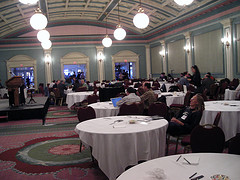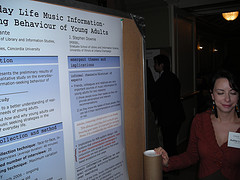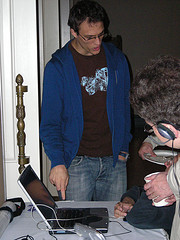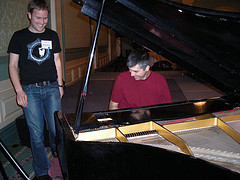I've been working on a web 2.0 mashup. I've released it to a small
audience to get an idea of how stable it is and to get an idea of how
well it scales. One thing I've learned in deploying
and monitoring this app is that unlike a web 1.0 page where you could
easily track and report page views, it is much harder to measure how
popular a web 2.0 app is. In the web 1.0 world, there was the
simple page load. A user would visit your page and you would bump
your page counter. Nearly every web page displayed the
number of page hits. This was a nice simple metric.
Now
however in the web 2.0 world, things are not so cut and dried.
With a web 2.0 app, a user may visit a site and stay for a long time,
interacting with the site while the browser is making background
asynchronous calls to the server to update the content. The
question is how to count this. Technically there's only one page
load when the user arrives at the site, but the user may spend all day
at the site, interacting with it. Some sites are particulary
sticky - web sites such as
writely may have users that use the site for many hours continuously. Clearly there's got to be a a web 2.0 version of the page count.
Others have raised this question, but without offering a clear answer.
So let me humbly propose a web 2.0 metric:
user-minutes.
This metric indicates how many cumulative minutes all users have been
at the site. One user visiting the site for an hour would be 60
user-minutes. 60 users visiting a site for one minute each would also be
60 user-minutes.
So here are some stats for my web mashup:
Days Live
|
4
|
Unique visitors
|
5300
|
Total http requests
| 4,700,000
|
Page loads
| about 10,000
|
User-minutes
| 157,000
|
Average visit time per user
| 30 minutes
|
Considering the attention span of a web 2.0 user (remember that a
typical YouTube video is about 2 minutes long), I think it is
reasonable to equate a web 2.0 user-minute with a web 1.0 page
load. So for my app, at first glance with 10,000 page
loads it is probably not too interesting. But this app is
particulary sticky - the average user spends about 30 minutes a the
site. The 10,000 page loads doesn't show that, but using
the metric of 157,000 user-minutes we get a better understanding
of how active the site is.
Perhaps the user-minute isn't the best metric, but it is easy to
track, and easily understood and gives a good idea how active a site is.

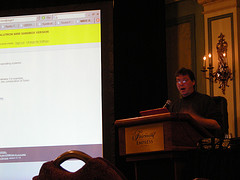
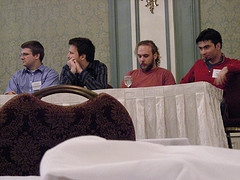

 With
the release of iTunes 7.0, it seems that finally, we are starting to
get back in touch with our album art. The latest version of Oboe
at
With
the release of iTunes 7.0, it seems that finally, we are starting to
get back in touch with our album art. The latest version of Oboe
at 
